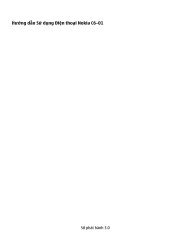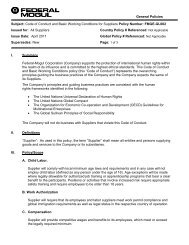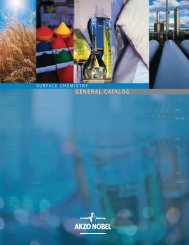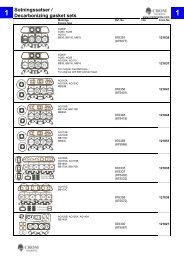You also want an ePaper? Increase the reach of your titles
YUMPU automatically turns print PDFs into web optimized ePapers that Google loves.
BALL BEARINGS<br />
The Annular Bearing Engineers’ Committee has established five<br />
classes of tolerances <strong>for</strong> ball bearings, known as ABEC 1, ABEC 3,<br />
ABEC 5, ABEC 7 and ABEC 9. The highest number indicates the<br />
class with the most exacting tolerances. Every ball bearing<br />
manufactured by <strong>Timken</strong> is made to close tolerances, adhering to<br />
the established ABEC standards.<br />
In general, these standards are equivalent to the comparable<br />
classes of tolerance established by the International Organization<br />
<strong>for</strong> Standardization, known as ISO P0 (ABEC 1), ISO P5 (ABEC 5),<br />
ISO P4 (ABEC 7) and ISO P2 (ABEC 9).<br />
<strong>Timken</strong> manufactures a complete line of super precision ball bearings<br />
made to ABEC 7 and 9/ISO P4 and P2 tolerances <strong>for</strong> applications<br />
involving high speeds, extreme accuracy and rigidity. The range of<br />
such equipment includes high-grade machine tools, jet engines,<br />
computer hardware, robotics and space exploration vehicles.<br />
<strong>Machine</strong> tool bearings, basically single-row construction, are<br />
available in four series, named ultra-light (9300/ISO 19), extra-light<br />
(9100/ISO 10), light (200/ISO 02) and medium (300/ISO 03), providing<br />
a considerable range in external dimension relationships.<br />
The chart below shows the various classes of tolerances <strong>for</strong><br />
35.000 mm (1.3779 in.) bore size, light-series bearings (207). To<br />
meet the exacting requirements of the machine tool industry, even<br />
ABEC 9/ISO P2 tolerances do not represent the ultimate, since some<br />
special applications require even higher precision.<br />
SYSTEM TOLERANCES<br />
ENGINEERING<br />
Be<strong>for</strong>e determining which type and classification of <strong>Timken</strong> super<br />
precision ball bearing is best suited <strong>for</strong> a particular application,<br />
it is important to explore all relevant details of the bearing<br />
characteristics, tolerances and mounting, as listed in the catalog<br />
data tables. Although cost is another factor, it is not economical to<br />
attempt the use of low-precision bearings on an application where<br />
extra-high speeds and ultra-precision bearings are required.<br />
<strong>Timken</strong> precision bearings are manufactured to close tolerances to<br />
help assure consistent per<strong>for</strong>mance and interchangeability. To take<br />
full advantage of this precision product, it is expected that equally<br />
close tolerances be used in the production of mounting components<br />
(housings, shafts, spacers, etc.). There<strong>for</strong>e, special consideration<br />
must be given to the particular details relating to proper shaft and<br />
housing fits and the housing design.<br />
A<br />
0.030<br />
Inner ring<br />
Outer ring<br />
0.00120<br />
0.025<br />
0.00100<br />
Tolerances in mm<br />
0.020<br />
0.015<br />
0.010<br />
0.005<br />
Not specified<br />
Not specified<br />
0.00080<br />
0.00060<br />
0.00040<br />
0.00020<br />
Tolerances in in.<br />
0.000<br />
Bore diameter Radial runout Lateral runout Outer O.D. Radial runout Lateral runout<br />
0.00000<br />
ABEC 9 (ISO P2) ABEC 7 (ISO P4) ABEC 5 (ISO P5) ABEC 1 (ISO P0)<br />
Fig. 70. Comparison of tolerances among ABEC/ISO classes (light series, 35.000 mm bore [1.3779 in.] type).<br />
TIMKEN MACHINE TOOL CATALOG 77







